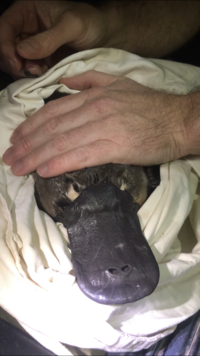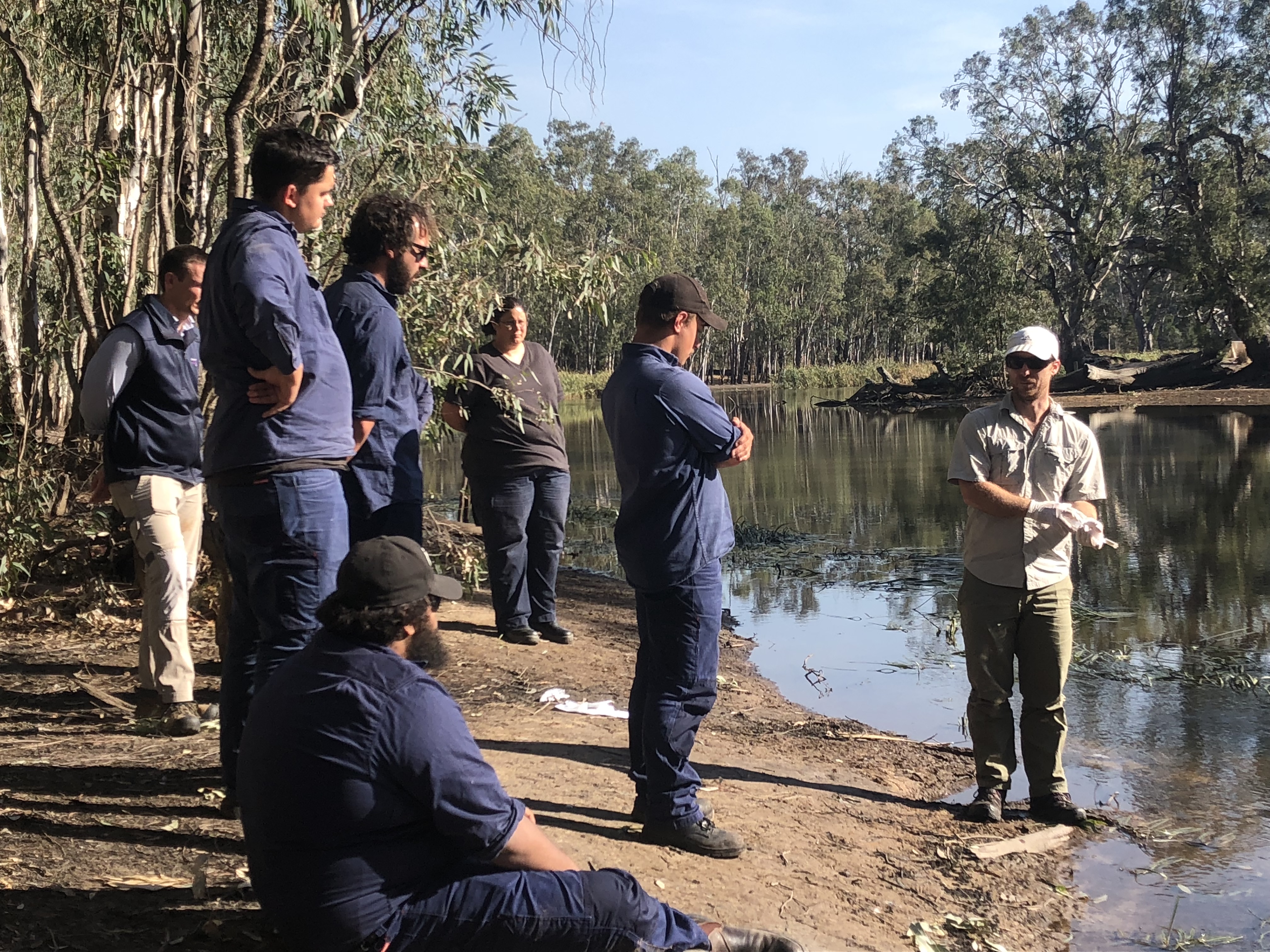Budj Bim rangers, a wildlife ecologist and Glenelg Hopkins CMA have undertaken detective work trawling for traces of environmental DNA (eDNA) along the Glenelg River in pursuit of an elusive character – the iconic platypus.
While there had been reports from locals that platypus thrive in the Glenelg River, scientific surveys to confirm the number and distribution of the species had never been done.
Monitoring teams collected water samples from the river between Connewirricoo near Harrow and Rocklands Reservoir in search of traces of the platypus. Scientists analyse the samples for cellular traces of platypus DNA left in the environment through shed genetic material like hair, skin or faeces.
Results from this inaugural survey for the Glenelg River will help to ascertain the whereabouts of platypus, delivering a better understanding of its distribution.
eDNA collection at Glenelg River with Budj Bim rangers, by Glenelg Hopkins CMA
Glenelg Hopkins CMA’s Debbie Dalziel said objectives of the platypus monitoring project were two-fold.
“We want to develop a better understanding of platypus distribution in the Glenelg, while also providing opportunities for Aboriginal rangers, CMA staff and scientists to come together and share knowledge of platypus requirements, monitoring techniques and environmental management skills.
“Ultimately, this project gives project participants and the wider community an understanding of the benefits of a healthy river system, including the contribution of environmental flows from Rocklands Reservoir.”

Platypus monitoring, by Glenelg Hopkins CMA
